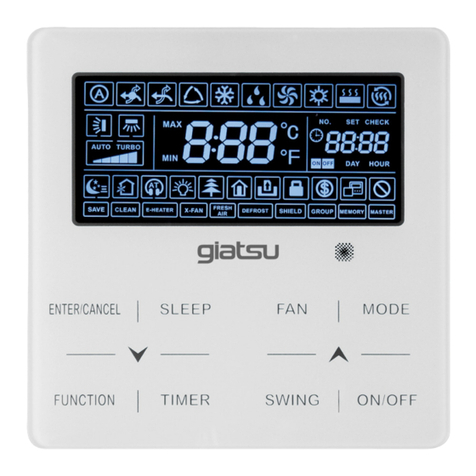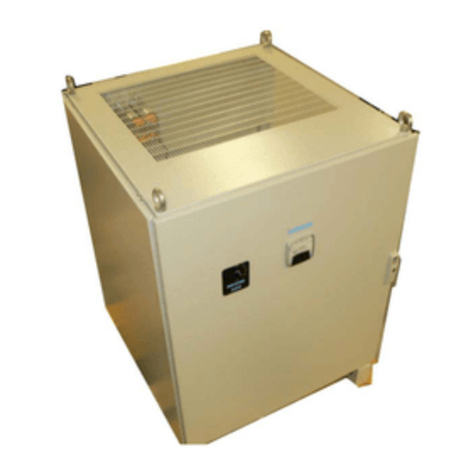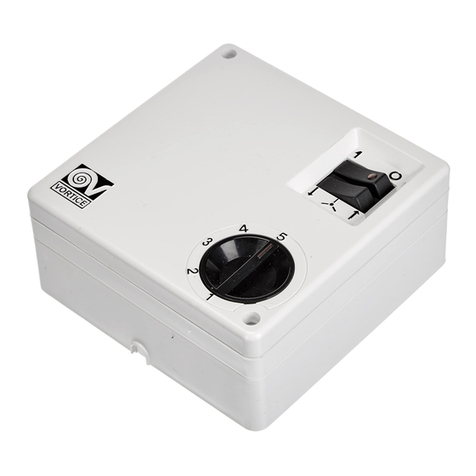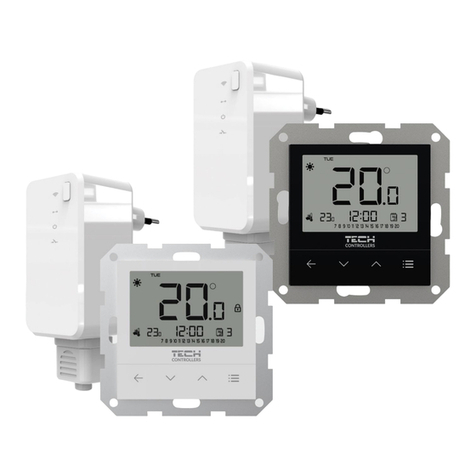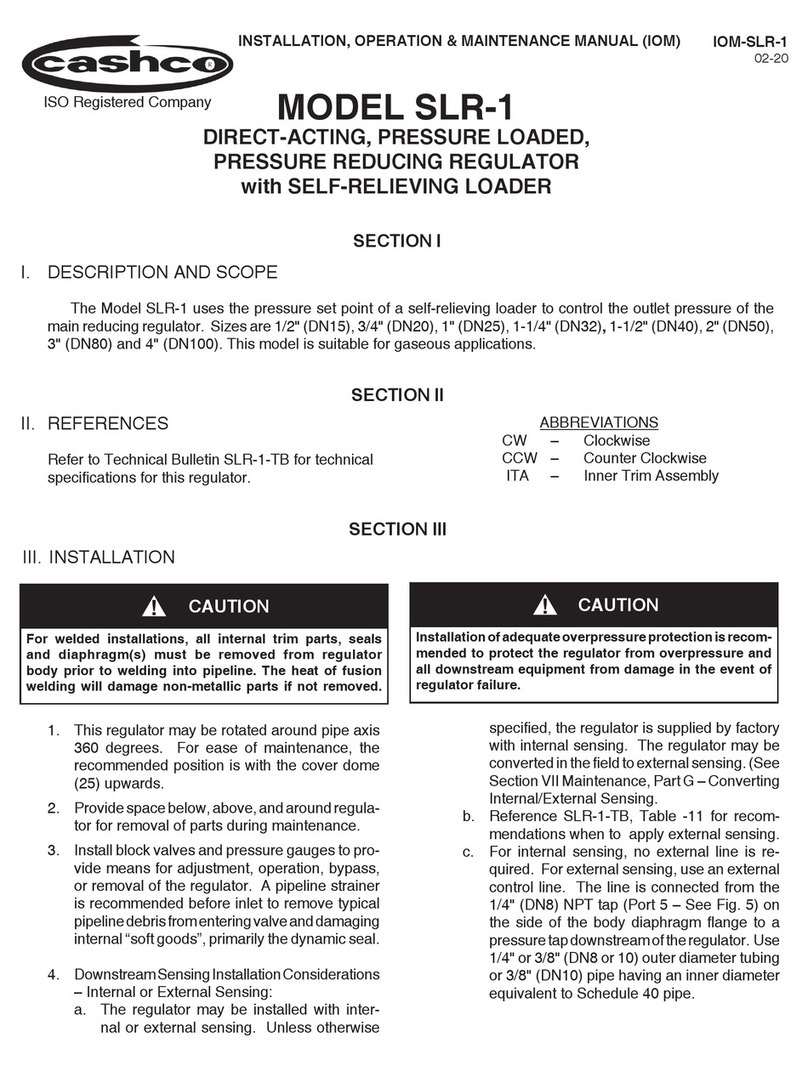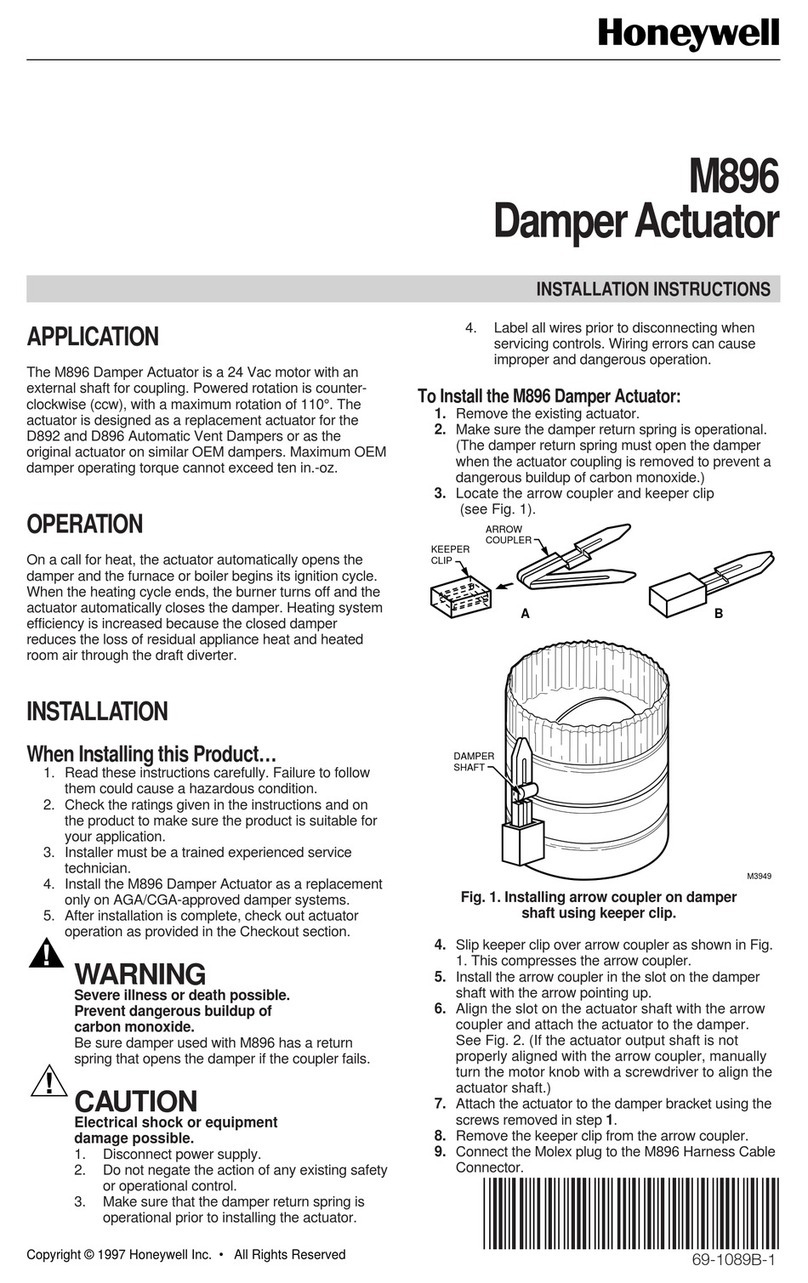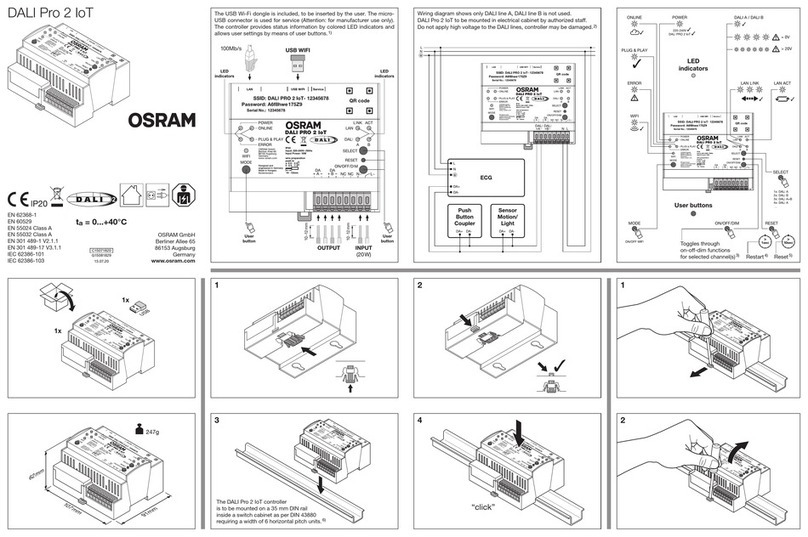AUSTART 2 Series Manual

INSTALLATION AND
MAINTENANCE MANUAL
K.H. EQUIPMENT PTY. LTD.
10-16 WESTPOOL DRIVE, HALLAM, VICTORIA, 3803, AUSTRALIA
PH: +61 3 8786 4766 FX: +61 3 9796 4878
info@khequipment.com.au www.austart.com
Issue: 05/04/2016 Rev.01
AUSTART ATS83-2
SERIES 2
TURBINE STARTER
1

THIS MANUAL CONTAINS IMPORTANT SAFETY INFORMATION. IT IS IMPORTANT THAT THE ENTIRE
CONTENTS BE STUDIED BEFORE INSTALLATION AND OPERATION. IT ONLY REFLECTS GENERIC
INFORMATION RELATING TO A STANDARD AUSTART ATS83-2 TURBINE STARTER. VARIOUS OTHER
OPTIONS ARE AVAILABLE TO PROVIDE INERTIA DRIVE SYSTEMS, MUFFLERS OR THREADED EXHAUSTS TO
MEET SPECIFIC APPLICATION REQUIREMENTS.
FOREWORD
This manual contains instructions for the
installation, maintenance and operation of
your new ATS83-2 AUSTART Air Starter motor. It
has been designed to provide you with safe
and reliable service. However, it is both a
pressure vessel and a piece of rotating
machinery. Therefore operators and
maintenance personnel must exercise good
judgement and appropriate safety practices
to avoid damage to the equipment and
prevent personal injury. The instructions in this
manual are intended for personnel with a
general training in the operation and
maintenance of air starter equipment. It
should be understood that the information
contained in this manual does not relieve the
operating and maintenance personnel of the
responsibility for exercising good normal
judgement in the operation and care of air
starter equipment and their associated
systems.
Throughout this manual you will encounter
the words: ‘WARNING’, ‘CAUTION’ and
‘NOTICE’. These paragraphs are intended to
emphasise certain areas where personnel
safety and satisfactory starter operation may
be compromised should the message be
ignored. The definitions of these words are as
follows:-
An operating procedure, practice, etc. that if
not strictly observed could result in personal
injury.
An operating procedure, condition, etc. that if
not followed, could result in damage to, or the
destruction of equipment.
An operating procedure, condition, etc. that is
essential to highlight and observe.
It is advisable that a safety program be
established to address the safety issues
detailed within this manual before installing,
operating or maintaining this equipment. It is
important such a program covers the hazards
associated with compressed air.
Do not install this starter other than in
accordance with the instructions detailed in
this manual.
These instructions should be read completely
before beginning installation and should be
available to personnel responsible for
operating and maintaining this equipment.
The unit is capable of trouble free operation
when properly applied, installed and
maintained.
Extra copies of this manual are available from
your local AUSTART Air Starter distributor or
online @ www.austart.com
This manual is designed to cover all situations
normally experienced when installing,
operating and maintaining this equipment. In
the event situations are encountered that are
not covered by this manual, consult your
AUSTART agent or K.H. Equipment Pty Ltd
direct.
NOTICE
WARNING
!
CAUTION
WARNING
!
NOTICE
2

AUSTART PRODUCT NUMBERING
STARTER MODEL
SERIES
FLANGE CODE
PINION CODE
SPECIAL FEATURES
MODEL PREFIX
CODES:
A
S
AUSTART VANE STARTER
A
T
S
AUSTART TURBINE STARTER
AS50
Austart Air Starter
2
Series 2
01
SAE 1
09
9TH 3MOD R
A
ATEX Certified
ATS53
Austart Turbine Starter
02
SAE 2
10
10TH 8/10 R
B
BCB (Beryllium Copper Bronze Pinion)
ATS54
(ATS53 OH) Austart Turbine Starter
03
SAE 3
11
11TH 6/8 R
E
Threaded Exhaust 1.5”
AS55
(AS50 OH) Austart Air Starter
04
SAE 4
12
12TH 8/10 R
F
Threaded Exhaust 2” Bolt On
AS61
Austart Air Starter
13
12TH 8/10 L
G
Threaded Exhaust 2”
ATS63
Austart Turbine Starter
Other options
14
11TH 6/8 L
H
Highway Special
ATS64
(ATS63 OH) Austart Turbine Starter
available
15
10TH 8/10 L
I
Inertia Drive
AS66
Austart Air Starter
16
9TH 3MOD L
J
Threaded Exhaust Elbow 2”
AS67
Austart Air Starter
K
Kelly Spinner Muffler
AS68
(AS6070) Austart Air Starter
Other options
M
Mining Spec.(Cast Iron)
AS69
(AS67OH) Austart Air Starter
available
N
Short Nose (Inertia ATS77)
AS70
Austart Air Starter
P
Motor Ports 90°
ATS71
Austart Turbine Starter
R
Reduced Muffler
ATS73
Austart Turbine Starter
S
Short Muffler
ATS77
Austart Turbine Starter
T
Threaded Exhaust 3”
AS75
(AS70 OH) Austart Air Starter
U
U Configuration
AS78
(AS7080) Austart Air Starter
V
Value Muffler (ATS77)
AS80
Austart Air Starter
W
Gear Ratio
ATS83
Austart Turbine Starter
X
Special –Refer Factory
ATS84
(ATS83 OH) Austart Turbine Starter
AS85
(AS80 OH) Austart Air Starter
AS90
Austart Air Starter
ATS93
Austart Turbine Starter
ATS94
(ATS93 OH) Austart Turbine Starter
AS95
(AS90 OH) Austart Air Starter
AS100
Austart Air Starter
ATS103
Austart Turbine Starter
ATS183
Austart Turbine Starter
EXAMPLES OF BASIC STARTER PRODUCT NUMBERING
ATS63-0110M PERKINS 1006 SAE1 10TH MINING SPEC
ATS63-0409M MWM D916-6 SAE4 9TH MINING SPEC
ATS73-0311 CUMMINS N14 SAE3 11TH
ATS73-0314 CUMMINS N14 SAE3 11TH LH
ATS73-0311I DETROIT 12V71 SAE3 11TH INERTIA DRIVE
ATS73-0314I DETROIT 12V71 SAE3 11TH INERTIA DRIVE LH
ATS73-0312M CATERPILLAR 3306 SAE3 12TH MINING SPEC
ATS83-0311IT WAUKESHA 7072 SAE3 11TH INERTIA THREADED EXHAUST
ATS83-20311 CATERPILLAR 3408 SAE3 11TH SERIES 2
3

INSTALLATION AND PREPARATION FOR OPERATION
Maximum pressure for AUSTART starting
equipment is 150psi (standard operating
pressure is 100psi).
Ensure air supply is isolated before
installation, removal, maintenance or
adjustment of your AUSTART starter.
Before any starter is taken out of service
first bleed the air receiver of air and any
moisture that may have accumulated by
opening up the drain valve. Do not bleed
by removing the receiver plugs.
Remove air hoses to ensure complete
safety once the air supply has been
isolated and the receiver has been bled.
The air receiver must be manufactured to
an applicable pressure vessel code such
as AS1210 or similar.
Only use air hoses and fittings that are of
adequate size as indicated in the
installation schematic (page 6).
Always carry out a pressure test on the
complete starting system according to
Clause 8 on Page 5 before beginning
operation. Do not begin operations until
satisfied the unit has been installed
correctly.
Do not initiate a start until all components
have stopped rotating, this includes the
engine and starter motor.
Always use recommended lubricants
where prescribed by this manual. Under
no circumstances use flammable or
volatile liquids.
Ensure all fasteners are torqued to the
values prescribed in this manual. Use
thread sealant where indicated.
To ensure warranty provisions are not
invalidated use only genuine AUSTART
replacement parts. Non-genuine parts
may cause service and performance
problems and may affect the safe
operation of your starter.
PRELIMINARY INSTALLATION REQUIREMENTS
Numbers in brackets refer to items numbers on Exploded View drawing on page 8.
1. Your AUSTART Starter is flange mounted.
Before installing the starter carefully study
the mating position of the AUSTART starter
and engine flanges to determine whether
the air inlet port orientation or nose
housing (44) geometry will suit your
particular installation. If not suitable re-
orientate as follows -
Carefully loosen the band clamp (8) but
do not remove. The two housings can
now be rotated independent of each
other without separation.
Re-orientate the housings to the desired
position and torque the band clamp (8)
to 4ft lb (6 Nm).
2. Ensure pinion is suitable for engine
application ie correct pitch, diameter and
number of teeth.
3. Check flange to ring gear (FRG) spacing is
correct and that flange spacers are not
required. Pinion should be FRG less 1/8”
(3mm) when at rest.
4. Check AUSTART starter clears all obstacles
and the flange mounts to flywheel housing
squarely without using undue force.
5. Ensure the hoses, fittings and starter ports
are clean and free from dirt and foreign
objects. Ensure they remain so during
installation.
6. For optimum AUSTART starter performance,
ensure air supply pipes or hoses have an
internal diameter of at least 1” (25mm)
refer Installation Schematic on page 6. If
the main supply line length is greater than
15ft (5m) a size of 1-1/2” (40mm) should be
used. Keep the number of fittings and the
length of piping to a minimum. Avoid the
use of reducing bushes and other fittings
that could impede air flow.
WARNING
!
4

INSTALLING THE STARTER AND PIPEWORK
Refer to the Starter Installation Schematic drawing on page 6.
1. The air supply line should ideally exit from
the top or side of the air receiver.
Do not connect air supply line to the bottom
of the air receiver. Moisture and system
contaminants collect at the receiver bottom
and can damage the AUSTART starter
internals if allowed to pass through.
Periodically drain moisture from the air
receiver using a drain valve connected at the
receiver bottom.
2. Install a 100 mesh ‘Y’strainer. A ‘Y’strainer
installed before the relay valve will provide
protection to the valve and AUSTART
starter from contaminants that may have
accumulated in the air receiver. Fitting of
an inline ‘Y’strainer (as described above)
is also required to ensure the AUSTART
starter is covered by our product warranty.
Ensure the inlet side of the ‘Y’strainer faces
the receiver ie the direction arrow points
away from the receiver.
3. Install AR1000 relay valve directly onto the
air starter motor inlet port with the two
screws provided. Ensure to also fit the
sealing o’ring provided. An optional
adaptor flange is available for remote
mounting if required.
Ensure the inlet side of the relay valve
connects to the exit side of the ‘Y’strainer.
4. Mount the starter control button SC25 onto
the vehicle dash-board or appropriate
control panel and connect to the air
receiver using a minimum of 1/4” (6mm)
line.
Ensure the inlet side of the starter control
button connects to the line from the receiver.
Any safety ‘switches’ should be installed in
this line between the starter control button
and the air receiver.
5. Determine the practicality of running the
1”air supply hose or pipe from the exit of
the ‘Y’ strainer to the inlet of the AUSTART
starter after the AUSTART starter is
mounted. It may be easier to fit the hose
before the AUSTART starter is mounted in
position.
6. Once the AUSTART starter is mounted, fit
the remaining 1/4” (6mm) control lines
from the AUSTART starter to the starter
control button and relay valve respectively
(refer page 6).
7. Make all hose or pipe connections leak
proof using a suitable thread sealant.
8. Once the connections have been made,
pressurise the system and check for leaks
using ‘soapy’ water or similar solution.
CAUTION
NOTICE
NOTICE
NOTICE
5

6

7

8

AUSTART ATS83-2
General Build List
ITEM
PART NO
EXT
DESCRIPTION
QTY
ITEM
PART NO
EXT
DESCRIPTION
QTY
1
3029
000
NUT
3
28
7020
000
CIRCLIP
+
1
2
3007
120
END COVER MUFFLER
1
29
7021
000
BEARING
+
1
3
3034
100
OUTER SLEEVE-HARSH MUFFLER
1
30
7022
000
SEAL
+
1
4
3014
000
SPRING
3
31
8317
100
GEAR CASE
1
5
3013
110
STUD SPACER
3
32
8024
000
COUNTERSUNK SCREW
2
6
3004
120
BAFFLE PLATE
1
33
8023
000
O RING
+
1
7
3027
110
STUD
3
34
8025
310
BEARING HOUSING
1
8
7322
000
BAND CLAMP
2
35
8026
000
O RING
+
1
9
7321
220
END COVER
1
36
7033
000
O RING
+
1
10
7310
000
O RING
+
2
37
8028
100
PISTON
1
11
7301
000
SPECIAL NUT
1
38
8029
500
WIPER SEAL
+
1
12
7304
000
WASHER
1
39
8030
155
DRIVE SHAFT
1
13
7314
320
TURBINE ROTOR
1
40
8031
XXX
DRIVE ASSY
1
14
7302
921
TURBINE HOUSING
1
41
6734
000
SPRING
1
15
7312
110
SEAL SLEEVE
1
42
7023
000
O RING
+
1
16
7313
000
PISTON RING
2
43
8318
000
SCREW
9
17
7309
000
O RING
+
3
44
8034
XXX
NOSE HOUSING
1
18
6611
000
BEARING
+
2
45
8036
000
SEAL
+
1
19
7303
110
ROTOR SHAFT
1
46
8037
000
BEARING
+
1
20
7004
000
BEARING
+
1
21
6612
000
CIRCLIP
+
1
22
7018
000
CIRCLIP
+
1
23
6305
000
COUNTERSUNK SCREW
3
24
8306
100
RETAINER
1
25
8307
100
PLANET GEAR
3
8340
910
SERVICE KIT CONSIST AS MARKED +
A.R.
26
8315
000
BEARING
+
3
27
8316
900
SPIDER HUB ASSY
1
- XXX DENOTES OPTIONS AVAILABLE ATS83-2 REV.01 05/04/2016
PARTS BREAKDOWN
9

10

MAINTENANCE
DISASSEMBLY
Refer to the Exploded View and Cross Sectional View drawings on pages 8 &10.
Begin by removing the two band clamps (8)
and separate the three sub-assemblies; the
nose assembly, the motor assembly and the
silencer assembly. Gently tap the assemblies
with a soft hammer if necessary.
The sub assemblies may now be dismantled
separately. Disassembly of any of these three
sub-assemblies is detailed in the exploded
view on page 8 and is basically in the order
shown. Refer also to the following instructions:
NOSE ASSEMBLY
1. Remove screws (23), retainer (24), planet
gears (25) and bearings (26). If necessary
gently tap the three countersunk screws
(23) to loosen them.
2. Remove nine screws (43) and separate the
gear case (31) by gently tapping it with a
soft hammer if necessary.
3. Remove the two countersunk screws (32).
The bearing housing (34) should spring
apart from the nose assembly. Gently tap
the nose housing (44) with a soft hammer to
assist it to separate if necessary.
4. Remove spring (41), drive assembly (40)
and piston (37).
5. Remove circlip (22) using circlip pliers and
spider hub assembly (27).
6. Support bearing housing (34) in the vertical
position and gently press out drive shaft (39)
from bearing (29).
7. Remove circlip (28) using circlip pliers and
press out bearing (29) and seal (30).
8. Remove nose bearing (46) and seal (45)
from nose housing (44).
MOTOR ASSEMBLY
1. Remove special nut (11) and washer (12).
Difficulty may be experienced and it will be
necessary to restrain the turbine rotor (13)
from turning by using a ring spanner
(wrench) on the special flats provided.
2. Remove circlip (21) using circlip pliers and
press out rotor shaft (19) through rotor (13)
as an assembly.
3. Press out seal sleeve (15) and bearings (18)
from turbine housing (14).
4. Press off bearing (20) from the rotor shaft
(19).
SILENCER ASSEMBLY
Remove the three nuts (1) and assembly will
easily come apart.
WARNING
!
11

INSPECTION
Refer to the Exploded View and Cross Sectional View drawings on pages 8 &10.
1. Visually inspect all parts removed during
disassembly for excessive wear or damage.
Replace any damaged or questionable
parts.
2. Pay particular attention to the vanes on
end cover (9) and turbine rotor (13) and
look for cracks, chipping, warping or
excessive wear patterns. Rotor (13) should
fit tightly on to the rotor shaft (19). Replace
any damaged or questionable parts.
Remove any burrs.
3. Also pay particular attention to all gear
teeth looking for cracked or broken teeth
and excessive wear. Check the pinion on
the drive assembly (40) for evidence of
unusual contact patterns resulting from
misalignment or improper engagement.
Remove any burrs or replace if
questionable.
4. Check all bearings are free to rotate and
do not have excessive play between races.
If in doubt replace questionable bearings.
Do not wash shielded bearings that are to be
reused in solvent or blow with compressed air
as it may remove internal lubrication.
Bearings that are to be reused should be
cleaned by wiping the end shields with a
clean cloth.
5. Clean all other parts that are going to be
reused with commercially approved
solvents.
Ensure cleaning operations are carried out in
a properly vented area away from open
flames.
6. It is recommended that when servicing your
AUSTART Turbine Starter always replace
complete repair kit contents.
CAUTION
WARNING
!
12

REASSEMBLY
Refer to the Exploded View and Cross Sectional View drawings on pages 8 &10.
Reassembly of any of the sub assemblies
detailed in the exploded view on page 8 is
basically in the reverse order shown. Refer
also to the following instructions:
NOSE ASSEMBLY
1. Begin by pressing the bearing (46) and seal
(45) into nose housing (44) using a press
with an appropriate pressing tool.
2. Drive home the seal (30) into the bearing
housing (34) until it bottoms.
Ensure the seal (30) is fitted the correct way ie
with the tapered leading edge engaged first.
Liberally grease the exposed side of the seal
(30) with lithium based grease such as
Valvoline Valplex EP grease or similar.
3. Using a press drive home the bearing (29)
into the bearing housing (34) until it
bottoms. Then insert drive shaft (39) into the
bearing (29) and press home. Ensure the
bearing housing (34) is well supported
during this operation. Finally fit circlip (28)
using circlip pliers.
4. Slip on spider hub assembly (27) onto shaft
(39) and fit circlip (22) using circlip pliers.
5. Fit o’rings (33), (35) and (42) onto bearing
housing (34).
6. Fit o’ring (36) and wiper seal (38) onto
piston (37).
7. Liberally grease piston (37), the inner
portion of the bearing housing (34) and
drive shaft (39) where it extends, then
gently slide piston (37) onto the bearing
housing (34) without damaging o’ring( 35).
8. Slide drive assembly (40) onto drive shaft
(39) and then fit spring (41) over drive
assembly (40).
9. Liberally coat the inner regions of nose
housing (44) and bearing (46) with grease
and assemble nose assembly over piston
(37) taking care not to damage wiper seal
(38). Rotate the nose assembly until the
two countersunk screw holes line up
between the nine main screw holes.
10. Squeeze together bearing housing (34)
and nose housing (44) being careful not to
damage o’ring (42) and then insert
countersunk screws (32).
11. Slide gear case (31) onto bearing housing
(34), ensuring o’ring (33) is not damaged
by smearing oil on the o’ring (33) to allow
gear case (31) to easily slide over.
12. Line up set screw holes and install nine set
screws (43)
13. Invert the built up nose assembly and
restrain in the vertical position. Install the
three planet gears (25) and bearings (26)
onto the spider hub assembly (27).
Coat gear bearings with grease before
assembly.
Ensure planet gears (25) are installed with the
boss side of the gear facing the spider hub
assembly (27).
14. Install retainer (24) to the spider hub
assembly (27) and install the three
countersunk screws (23).
15. Liberally pack gear teeth with suitable
grease such as Valvoline Valplex EP or
similar.
The nose assembly is now ready to accept
the motor assembly.
CAUTION
CAUTION
13

MOTOR ASSEMBLY
1. Begin by lightly oiling the internal bore of
the turbine housing (14) with hydraulic oil
and fitting two inner o’rings (17).
2. Evenly press home bearings (18) until they
bottom. Ensure o’ring (17) is not damaged
or dislodged.
3. Install piston ring (16) onto seal sleeve (15).
Rotate piston rings (16) so that the gaps
are 180° apart.
4. Lightly grease the outside of the piston
rings (16) on the seal sleeve (15) and push
home into the turbine housing (14) until it
bottoms.
5. Press bearing (20) onto rotor shaft (19)
using a press and liberally grease top of
bearing.
6. Install third o’ring (17) into turbine housing
(14) and insert rotor shaft (19) and bearing
(20) as an assembly. This should be
achieved with an even push fit.
7. Insert circlip (21) with circlip pliers.
8. Fit turbine rotor (13) onto rotor shaft (19)
extension.
9. Lightly oil thread on rotor shaft (19)
extension and install washer (12) and
special nut (11). Tighten nut against the
turbine rotor (13) to a torque of 25-30 ft Ib.
(30-40Nm.) Prevent the turbine rotor (13)
from turning by using a ring spanner
(wrench) on the special flats provided.
10.Install o’ring (10) onto turbine housing (14)
and apply oil.
SILENCER ASSEMBLY
Assemble in the reverse order of disassembly.
Ensure baffle plate (6) moves freely under
compression of springs (4), Tighten nuts (1)
firmly.
ASSEMBLING NOSE & MOTOR ASSEMBLIES
1. Apply grease to planet gears (25) and
gear case (31). Carefully line up spline of
motor assembly shaft (19) with the planet
gears (25) on the nose assembly and slide
the nose assembly home.
2. Line up the nose assembly and motor
assembly air inlet ports and install band
clamp (8). Tighten band clamp (8) to 4 ft lb
(6 Nm).
3. Test the operation of the drive assembly
(40) by introducing air pressure at the
control line inlet port. The drive assembly
should move freely forward when air
pressure is applied and back once the
pressure has been relieved. Investigate if
this movement is not smooth.
The nose/motor assembly is now ready to
accept the silencer assembly.
ADDING SILENCER ASSEMBLY
1. Install silencer assembly to the turbine
housing (14). Install band clamp (8).
Tighten band clamp (8) to 4 ft lb (6Nm).
2. The AUSTART Air Starter is now assembled
and ready for installation. Refer to
Installation and Operation section of this
manual.
14

WARRANTY POLICY
All Austart Products and services supplied by K.H. Equipment Pty. Ltd. (herein called
“the Manufacturer”) is warranted to be free from any defect in workmanship and
material under conditions of normal use and service for engine starting applications
for a period of 12 months from the date of purchase by the first user. A period of 6
months is warranted for all service work. Normal wear and tear is excluded from the
warranty cover.
The Manufacturer will replace or repair at their works, without cost, any Austart Starter
or parts found to be defective or at their discretion choose to refund the purchase
price less a reasonable allowance for depreciation in exchange for the starter or part
should the item prove impossible to repair or replace.
This warranty shall not apply to any Austart Starter or parts which have been altered or
repaired or purchased outside the Manufacturer and its assigned agents nor to
equipment or parts that have been subject to misuse including overloading, neglect,
accident or damage, nor to any part or parts improperly applied or installed.
This warranty is in lieu of all other warranties and conditions statutory or otherwise
expressed or implied and of all other obligations or liabilities on the Manufacturer’s
part. The Manufacturer’s maximum liability is limited to the purchase price of the
starter and is not liable for any consequential damage, loss or expense.
Repeat engine starting attempts must be delayed for 15 seconds to allow all Austart
Starter and engine components to stop rotating to avoid damage or adverse wear of
components.
15

NOTES
DISTRIBUTED BY
16
This manual suits for next models
1
Table of contents
Popular Controllers manuals by other brands
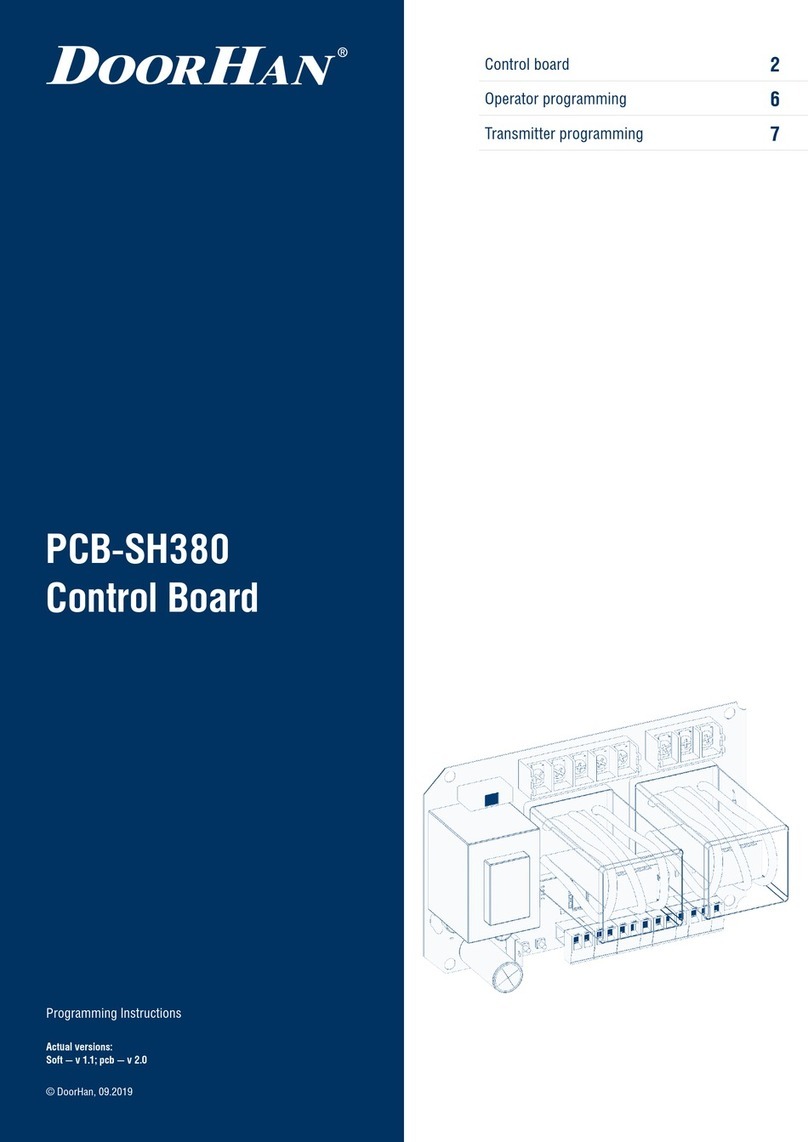
DoorHan
DoorHan PCB-SH380 quick start guide
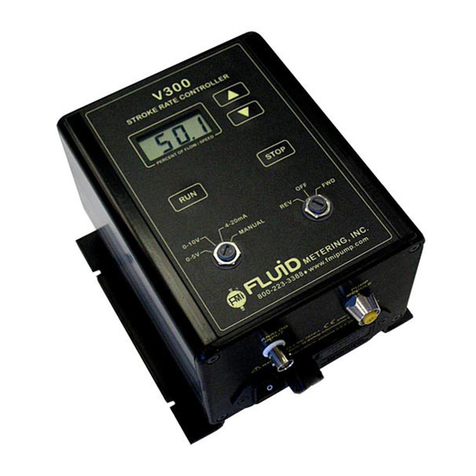
FMI
FMI V300 Setup instructions
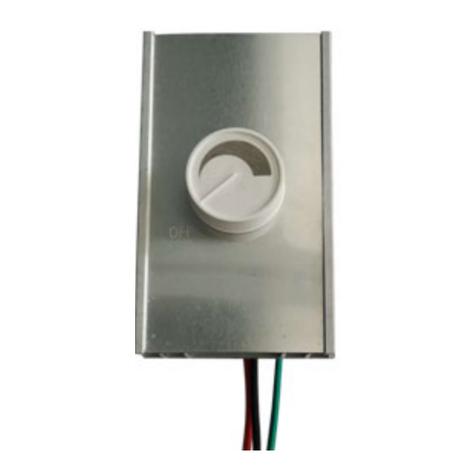
Ortech
Ortech OD-SCV-10A quick start guide
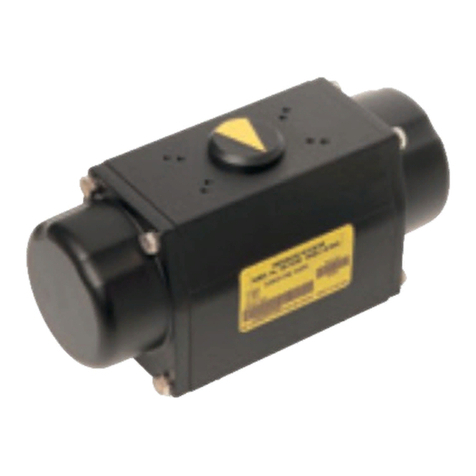
Emerson
Emerson KEYSTONE FIGURE 79U Operating and maintenance instructions
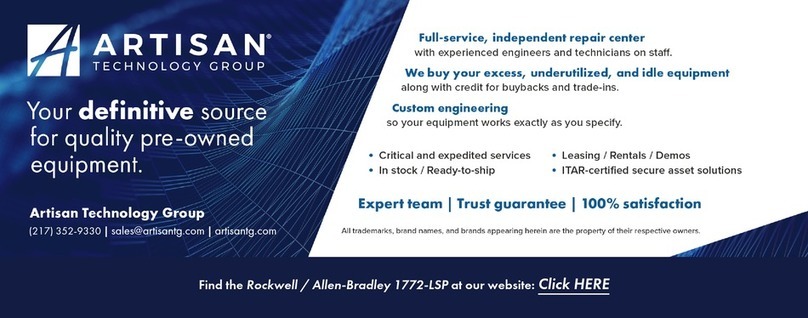
Allen-Bradley
Allen-Bradley Mini-PLC-2/15 Assembly and installation manual
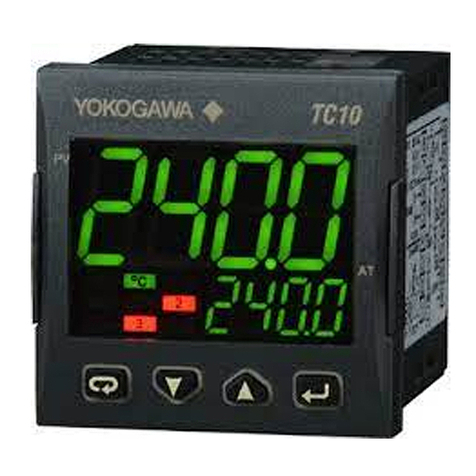
YOKOGAWA
YOKOGAWA TC 10-L Engineering manual
